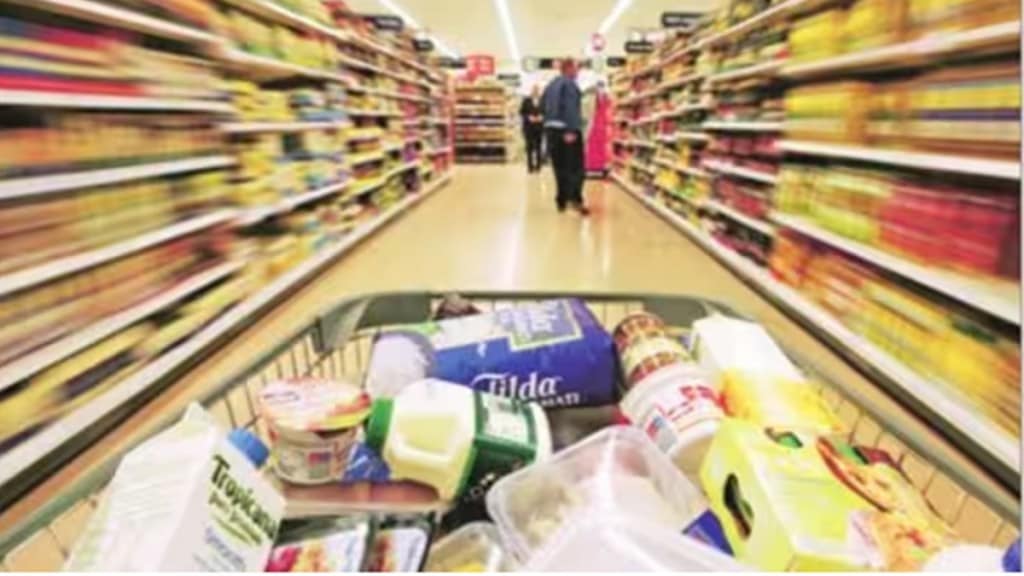India’s Rs 5-trillion domestic fast-moving consumer goods (FMCG) market is seeing the resurgence of small manufacturers as inflationary pressures begin to ease, notably in crude-linked derivatives.
These local brands are also beginning to get active in the marketplace, grabbing share from their larger counterparts by innovating in terms of product, packaging and promotions and keeping price points low at the same time.
Data shared by research and insights agency Kantar for the twelve months ending April 2023 shows that local brands had a volume growth of 12.7% versus 8.5% for national brands. According to industry estimates, the volume growth number for small brands is at about 15-16% in the May-July period as inflation has continued to moderate during the period, even as large brands have seen a growth of about 10% during this period.
Kantar says that the volume share of national brands remains higher than local brands at 36% versus the latter’s 28% for the twelve months ending April 2023. Even then, there is no denying that small players are chipping away at the heels of big brands.
At a category level, industry experts that FE spoke to say that the shift from big to small brands is as high as 75% in hair oils in some markets such as Rajasthan, while the shift is 65% in detergents in markets such as Uttar Pradesh. It is 49% in spices in states like Karnataka, 38% in washing powder in Andhra Pradesh and 19% in noodles in states such as Gujarat.
The trend has caused national FMCG companies such as Hindustan Unilever (HUL) to take guard. In an earnings call last week, HUL’s MD & CEO Rohit Jawa said that the company was focused on volume growth as competitive intensity had grown from small players who had vacated the market during high inflation and who were now coming back into the market.
“We are, at the moment, specifically focused on driving competitive volume growth. That at one level is the topline job. At the bottomline, we do have the tailwind of reducing commodity costs. Some of that is being re-invested as higher advertising and promotion (A&P) spends. We want to keep our brand strong,” Jawa said about the company’s strategy to counter competition.
Experts says that national brands need to focus on markets where local brands are growing fast to stem market share loss.
“In a market where commodity costs are falling, small players can quickly take advantage of the gains and roll out products that suit local needs,” says Sachin Bobade, vice president, research at Mumbai-based brokerage Dolat Capital. “National players will have to react at the local level with suitable variants,” he says.
Just how fast local brands are growing can be gauged from this: Supremo 51, which is a detergent brand in Madhya Pradesh, for instance, has seen penetration levels touch 101% this year versus 8% last year, says K Ramakrishnan, MD, South Asia, Worldpanel Division at Kantar. “This means that consumers are lapping up this product within that market because it is addressing their needs,” he says.
Similarly Reflect Dishwash in Maharashtra, another local brand, has seen a penetration jump of 109% now versus 4% last year. While Sastry Balms in Andhra Pradesh has grown from 17% to 85% and Challenge Detergent Bar in Tamil Nadu has doubled its penetration (20% to 42%) in the last one year.
Food brands are also growing, says Kantar, despite inflationary pressures in wheat, milk and tomatoes in the last few months. For instance, 1 to 3 Noodle and Teju Masala in Karnataka and Balaji Gippi Noodle in Gujarat, says Ramakrishnan, have seen a sharp growth in penetration levels in the last one year. For Teju Masala, the penetration growth is from 37% to 65%, 1 to 3 Noodle has jumped from 35% to 113% and Balaji Gippi Noodle has grown penetration from 30% to 58% in a year.

